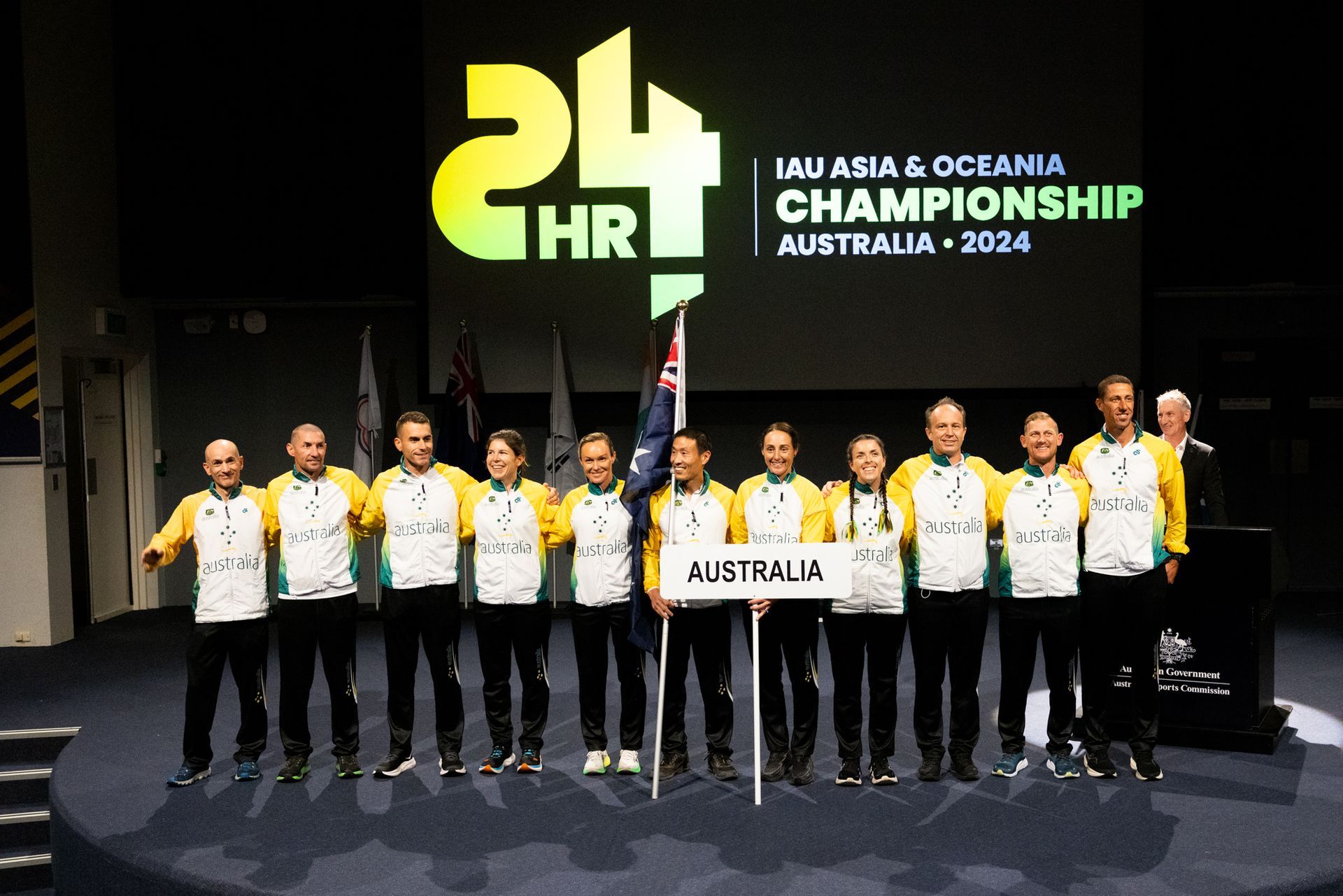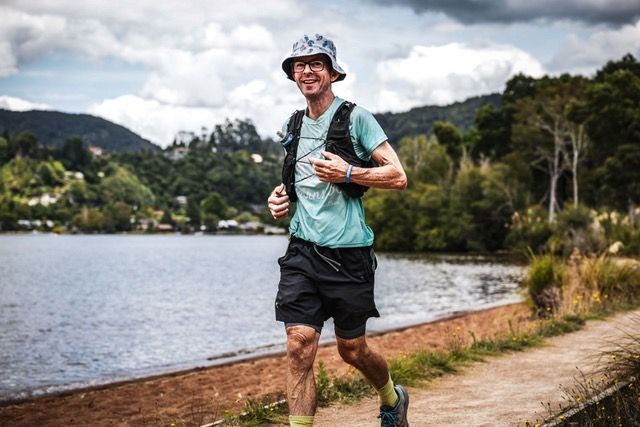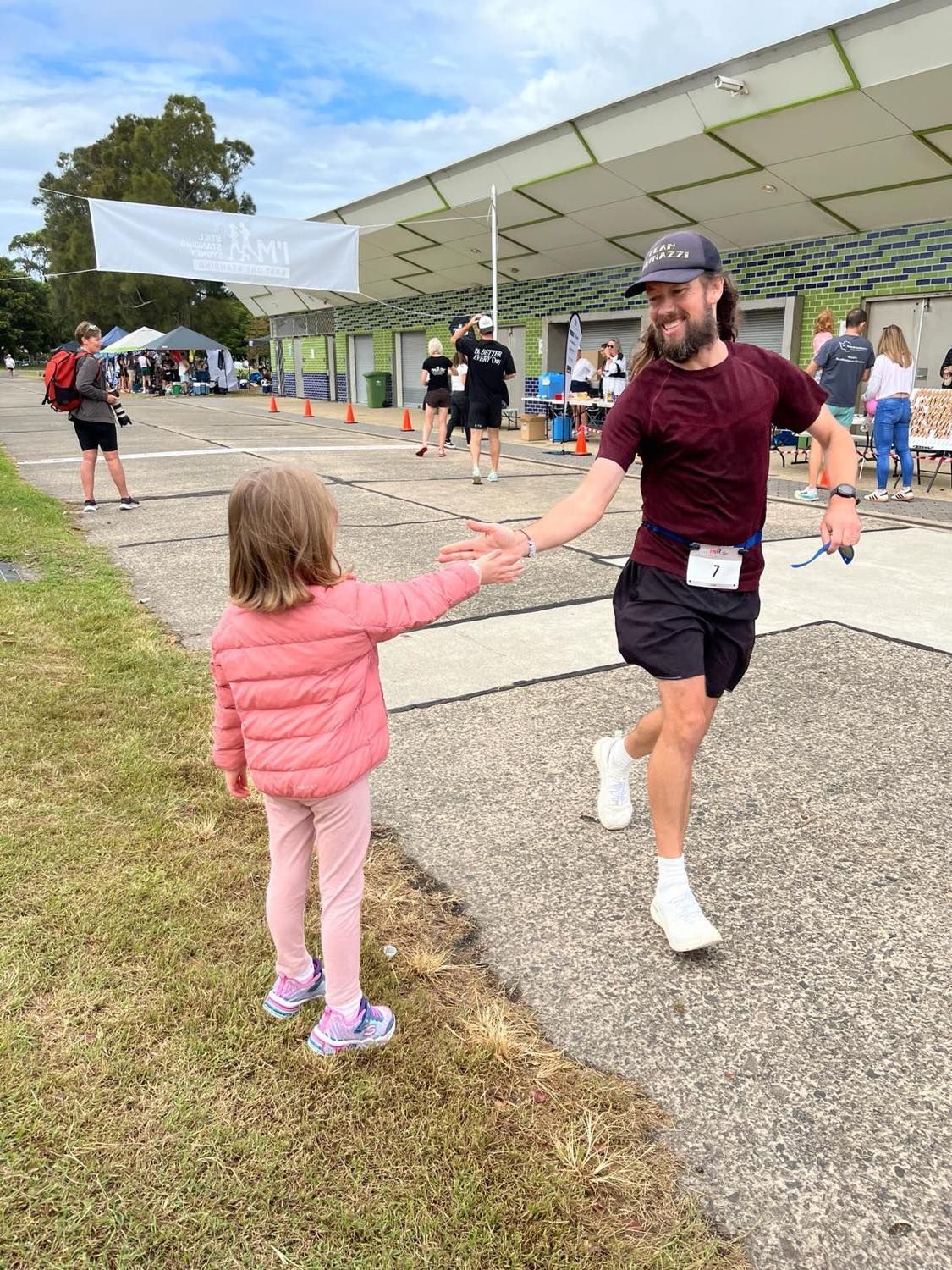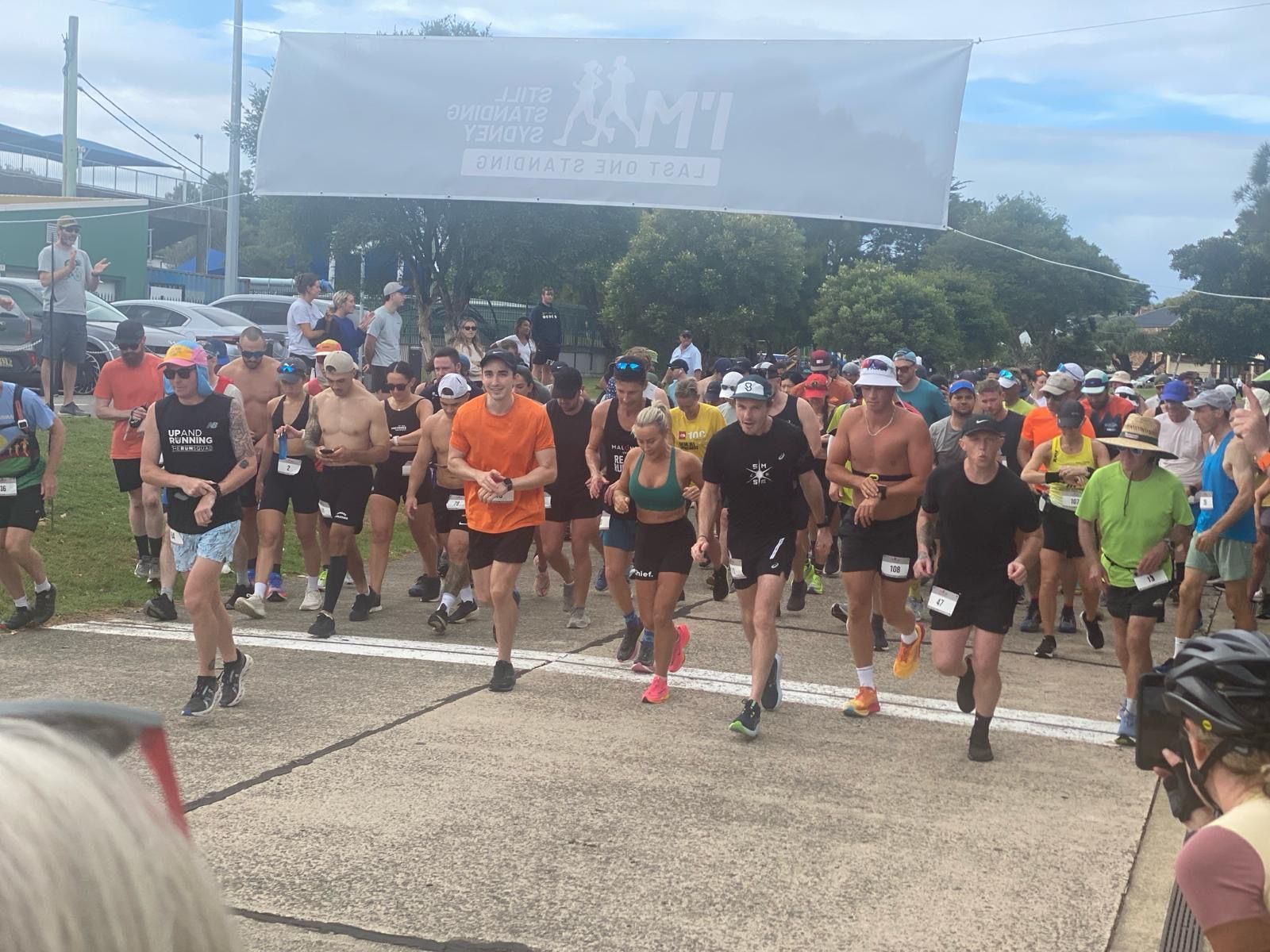
History – AURA Magazine – Vol 4 No 2 May 1989
In October 2017, the AURA Committee committed some funds towards the digitisation of all AURA publications from our inception in 1984 through to the present. With thanks to Kevin Cassidy and his complete collection, work has begun on this project, with a handful of magazines available on the website here.
My goal is to complete all scanning by the end of 2018, after which we hope to then make magazine content and articles available individually through the website. I’ll also be adding any race results found in the magazines to the AURA results system in due course.
Below are a few of the articles found in AURA Magazine Vol 4 No 2 May 1989.
Letters to the Editor
Dear Dot and Geoff,
I thought the readers of AURA Newsletter might be interested to learn just how tough the “Peds” of the 1880’s had to be.
In a 6 day race run from April 28th – May 3rd, 1884 the coaches of Patrick Fitzgerald decided to cut incisions in his thigh muscles to loosen up his legs in order that he be able to stay ahead of Charles Powell. Could you please clarify the official AURA policy on this practice? Would this constitute an unfair advantage? (Editors’ comment: No Mike, we don’t consider this practice an unfair advantage because we are contemplating surgery on your feet half way through your next 24 hour race).
When the going gets tough the tough get going. In 1888 the “Sheffield Blond” George Littlewood had an interesting 6 day race. I quote:
“It was on the second day of the race that the first blister appeared. It was smack on the ball of Littlewood’s right foot, the one that hit the ground hardest on his 100-mile-a-day pace. He altered his stride. There were four more days to go in the race. The second blister grew the next day. It was on the ball of his left foot. The blister on the right foot was getting raw.
On the third day his right hip swelled up with rheumatism.
The fifth and sixth days were the worst. The blisters burst. Blood gushed against raw flesh as Littlewood ran. The skin on his little toes on both feet had swollen and burst away from the skeleton beneath. The flesh flapped in pools of blood, and the bones chafed against Littlewood’s shoes. He ran on, ignoring his handlers’s pleas that he cease. He had the lead. He meant to hold it. He ran on.
Then the six days were up, and George Littlewood could stop running. He had won, and his prize money was nearly four thousand dollars.”
Whilst on the subject of “Georges”, I’d like to congratulate George Perdon on his run in the Colac 6 Day Race. It’s good to see the “youngsters” of the sport being
kept honest by our “mature” athletes. I also notice that George still holds the Australian 12 Hour record from 1970! Nearly 20 years.
I know George won’t remember me, but he and John Toleman were partly responsible in introducing me to running and teaching some of us the same way of training in the early days of the Professional Cross Country Club (P.C.C.C.). We used to judge the worth of a workout by how much pain we were able to tolerate! Without the steadying influence of guys like George, I would have left the sport many years ago.
All the best from Tasmania,
Mike March
Women steal ultra limelight
The sport itself took centre stage in 1988, gaining official IMF recognition and attracting new adherents to its courses. Andy Milroy followed the developments.
Re-print from Running Magazine Feb 1989
Last year saw women’s ultra running performances reach new heights and their general strength in the sport confirmed. The superb runs of Britain’s Hilary Walker were the ultimate proof. Though in recent years Hilary has been overshadowed by the great Eleanor Adams, in 1988 she displayed a dominance that none of her male competitors were able to match. On a road circuit at Preston in August she became the first woman to run 100 miles in under 15 hours with a time of 14:49:34, before improving her own best for 200km with 20:05, and then raising the female 24-hour standard to 146 miles 1629 yards.
Three months later on the track at Blackpool Hilary broke the world best track 100-miles with another sub-15 hour performance, and covered 140 miles five yards. This race lasted over 48 hours, and she still had another day of running. She reached 300km in 35:45, and 200 miles in 39:09, before contenting herself with a new world best performance for 48 hours of 227 miles 1313 yards.
After races like these, “obviously you feel pretty awful physically,” Hilary admits. “But then you remember what you’ve done and the sense of accomplishment outweighs the physical discomfort.” She also won both the Preston and Blackpool races outright, leaving several distinguished British male ultra runners foundering in her wake.
“When it comes to stamina and mental patience.” says Hilary, “women have the edge.” At Blackpool the women proved just how formidable they can be in the really long races, claiming first, third, fourth, sixth and seventh places. The men were muttering about demanding single sex races in future. Competition amongst the top women is becoming intense. At 24 hours there have been five performances over 140 miles this
year alone, set by Hilary, Marianne Savage, and Angela Mertens of Belgium. Eleanor Adams, the other woman to have run around 140 miles in a day hasn’t had a quiet year either. She spent most of the season racing abroad, but in a 12-hour race on the road at Harrogate she set a new world best of 83 miles 555 yards.
South Africa was the setting for possibly the most impressive performance of all, male or female. Thompson Magawana, a 2:10:39 marathon runner, produced a stunning 2:43:38 for 50km (31.06 miles) over the undulating Two Oceans course, smashing the previous best mark by 3 1/2 minutes and winning an R38,000 Jetta car.
At the other extreme, the International Association of Ultra Runners’ 1000-mile World Championships in May saw the remarkable Greek, Yiannis Kouros, overcome lack of sleep to demolish the world road best. To run over 95 miles in a day is a difficult enough task for most people, to average that for 10 consecutive days is an incredible feat. Kouros’ time of 10 days 10:30:35 knocked a day off the previous best, and en route he also surpassed his six-day track best with 639 miles.
Kouros was not the only person to set a world best in that championships. New Zealand’s Sandra Barwick ran a steady race to finish in 14 days 20:45:16, a performance that only 10 men have bettered.
The best mixed competition of the year came in the IAAF World Cup/IAU World Championship 100km race at Santander, Spain, held in October. Runners from over 20 countries took part, including most of Europe’s elite athletes. The tough course didn’t suit some of the runners, but Spanish world champion Domingo Catalan obviously felt at home, and fought off determined competition from Normano Di Gennaro of Italy to take the title for the second year in succession.
The strength of the women ultra runners was again confirmed when Ann Trason of the United States ran a relaxed 7:30 to set a new world best. The Hungarian Marta Vass also went under eight hours, and this marked the first time that two women had done so in the same race.
Nineteen eighty-eight also saw the recognition of ultra running by the IAAF, and at present discussions are underway about the future of the sport and the place of the lAU within the structure of the lAAF. Following the Santander race it was decided that the next World Championships should be held in Paris on June 18.
The British ultra scene has not been entirely dominated by women. Our male 24-hour runners have proved tremendous international competitors. Dave Cooper won the Cheviily-Larue 24 near Paris, with 145 miles in early June, and three weeks later at Frechen. West Germany, Paul Bream fought off the tough Hans-Martin Erdmann to record 159 miles on the track, the best 24-hour performance of 1988. Terry Edmondson, who had already won the Doncaster 24 hours with over 150 miles, went to Mullingar in Eire to win a day race there too.
Britain’s ultra success overseas has not been limited to 24 hours. Terry Tullet travelled to Botswana in Southern Africa to win the Marakaneio 72km race in record time, and Pat Macke in Japan finished second in the inaugural Hiroshima-Nagasaki 430km Peace Marathon. Paul Bream and Martin Daykin finished first and second in a French 12-hour race, while third went to UK resident James Zarei.
Globe-trotting Elanor Adams competed on three continents last year and was the first woman home in testing 1000km Sydney to Melbourne race. She also finished first in the Nagib Elias 5O miles in Trinidad, and did a fine third in the Santandcr World Championships. before rounding off in Australia finishing first woman in the Colac Six Day.
In the United States ultra races over mountain trails are becoming increasingly popular. A hundred-mile race over tough terrain is for many Americans the focus of their running year. The Grand Slam – comprising, the top four trail 100-milers – is considered the ultimate achievement by many American trail runners, Britain’s Martyn Greaves became the first non-American to that honour, and only the fifth runner ever to do it when he finished the Wasatch Front 100 Miles in Utah in September.
At home, the John o’Groats to Land’s End record was broken twice. Canadian Al Howie covered the distance in 11 days three hours in July, only to have Richard Brown lop nine hours off this time in October.
A sport is about far more than just its star performers. Ultra running is attracting an increasing number of runners, most of whom have run marathons and are seeking new challenges. The 50-mile South Downs European Challenge attracts a very large field each year: in 1998 there were 450 starters and 352 finishers. After tackling an event like the South Downs Way many runners want to see just how far they can run in a day. Most of the established 24-hour events now have to turn runners away. ‘I’he sheer demand for places has forced race directors to attempt to fit in more and more runners.
In 1988 the Solihull trtick race had 50 entered and 45 started: the Preston race was able to cater for 6l) runners, of whom 30 bettered 100 miles. These races are also attracting media attention. This year ITV companies televised the Solihull 24 hours and the Blackpool 48 hours.
Another big boost for the sport in this country is forthcoming with the first National 100km Championships, to be held this year. Such championships are now common in Europe and elsewhere. The Road Runners Club has designated the Nottingham 100km road race at Holme Pierpoint on May 7 as its inaugural championships, and the AAA Advisory Committee on Road Running will be recommending that this race be recognised as the first AAA 100km championships.
WHAT A TWENTYFOUR HOURS!
Mike Maddock
I seem to have rushed into ultra-running at the deep end. I competed in my first events last year and then my association with ultra people reached a real high when I watched Mike March set several records in winning the Victorian 24 Hour Championship at Coburg a couple of weeks ago.
When he was asked after the event if he was surprised to set an Australian record, his honest reply was, “No, I’ve been planning for it for several months now”. I knew of his plans and I also believed in his simple approach to running. There are no excuses. Things like food and drink addditives etc are just crutches to fall back on and blame if things go wrong. “Not enough sugar!”, “Drinks should have been every 15 not 20 minutes” or “I should have stopped for a massage when I first noticed the pain”.
Mike’s theory on running is simple. You do the training to run for 24 hours, then when the gun goes you just run – It was the first time I had been to a 24 hour event, and I found it most exciting (try telling that to an outsider). I was kept just a wee bit busy looking after Mike’s needs for the 24 hours (actually, I had to look after him from the time we left Tassie till we got back. He might be able to able to run, but anything else hopeless!)
It was fascinating to see and meet those people I had only read about, especially “Cliffy”, who would have to get the award for being the most friendly competitor. His running style was so smooth when his hip wasn’t troubling him.
P.S: Geoff, I wrote this poem just over two years ago. All true. Doctor said I would never run again. I could walk but would have to stop when it became swollen and sore All crap. Thought it might be okay in AURA
THE BASTARD – HE DIDNT SAY HOW
I've never been much of a runner.
But I'll be even less of one now.
For the doctor has told me I must give it up.
But the bastard - he didn't say how.
An occasional twinge in my left knee
Was the only problem I had.
It didn't seem really worth fixing
But I knew, with it done, I'd be glad.
I could push ahead with my training.
With dreams going around in my mind
Of a glorious run through "The Cradle"
And other long runs that I'd find.
I'd sampled the distant bush scenery
As I ran through raw forest so wet.
And I knew if I just took things easy,
I'd keep going for many years yet.
I never did mind the weather,
I would run in the rain or the snow.
Through the bush, over hills, along valleys.
Wherever I wanted to go.
Just trim the rough edge off the cartilage
Was all that he wanted to do.
And then after some recuperation
I'd be off again - good as new
But the cartilage wasn't the problem,
T'was the bone surface wearing away
And my running had come to a shattering halt
With a problem that was here to stay.
He said I could walk, if it wasn't too far
And I didn't break into a trot
So I'll have to rethink 'bout my life from here on.
And what other options I've got
Swimming is out 'cause I can't stand the wet.
And exploring in pools is no fun.
There's karate, aerobics and judo and stuff.
But nothing's as good as a run.
The friendships I've made just through running.
Are the nicest of things I recall.
And my thoughts of the Vets around Tassie
Are some of the warmest of all.
But running is like a drug problen.
My withdrawal - it has to start now.
And the doctor has told me I must give it up.
But the bastard - he didn't say how.








